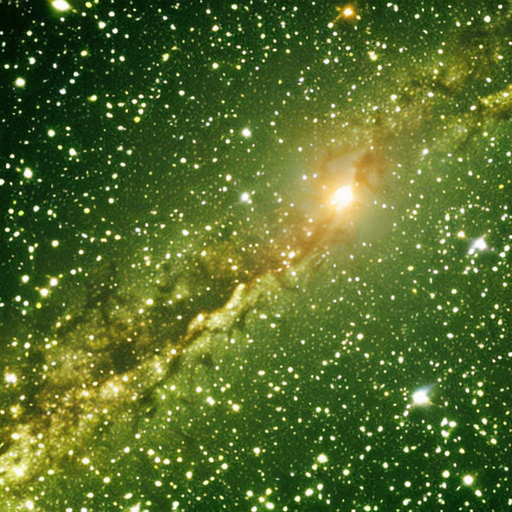Astrophysical Jets: A Comprehensive Summary
Astrophysical jets are powerful and narrow streams of plasma that are ejected from the vicinity of compact astronomical objects, such as black holes, neutron stars, and young stellar objects. These jets can extend over vast distances, sometimes spanning thousands of light-years. Astrophysical jets are a fascinating phenomenon that plays a crucial role in shaping and influencing the evolution of galaxies and the universe as a whole.
Formation and Composition
Astrophysical jets are formed through a process called accretion, which occurs when matter falls onto a compact object. As matter spirals towards the object, it forms an accretion disk. The intense gravitational forces and magnetic fields near the compact object cause the matter in the disk to be accelerated and ejected along the object’s rotation axis, forming the jet. The ejected material consists of highly energized particles, such as electrons and protons, which are ionized and heated to extremely high temperatures.
Observations and Characteristics
Astrophysical jets can be observed across a wide range of wavelengths, from radio waves to gamma rays. They often appear as elongated structures, with a bright core and fainter regions extending outwards. The emission from the jets is primarily non-thermal, meaning it is not produced by the thermal motion of particles but by other processes, such as synchrotron radiation. The jets exhibit a variety of features, including knots, shocks, and collimated flows, which provide valuable insights into their physical properties and dynamics.
Jet Collimation and Stability
One of the key challenges in understanding astrophysical jets is explaining how they maintain their collimated structure over such large distances. It is believed that magnetic fields play a crucial role in confining and directing the jet material. The magnetic field lines act as a sort of “guiding rails” that prevent the jet from dispersing. The stability of the jet is also influenced by the interplay between the magnetic field and the surrounding medium, which can either enhance or disrupt the collimation.
Energy Extraction Mechanisms
Astrophysical jets are powered by the release of enormous amounts of energy. The exact mechanisms responsible for extracting this energy from the compact object and transferring it to the jet are still not fully understood. However, several theoretical models have been proposed, including the Blandford-Znajek process, which involves the extraction of rotational energy from a spinning black hole, and the magnetic reconnection process, which converts magnetic energy into kinetic energy.
Impact on Galaxy Evolution
Astrophysical jets have a profound impact on the evolution of galaxies. They can transport vast amounts of energy and momentum into the surrounding interstellar medium, heating and ionizing the gas, and triggering star formation. The jets also play a crucial role in regulating the growth of supermassive black holes at the centers of galaxies. The energy released by the jets can prevent excessive gas accretion onto the black hole, thus limiting its growth and maintaining a balance between the black hole and its host galaxy.
Unanswered Questions and Future Research
Despite significant progress in our understanding of astrophysical jets, many questions remain unanswered. Scientists are still working to unravel the precise mechanisms responsible for jet formation, collimation, and energy extraction. They are also investigating the role of astrophysical jets in the formation and evolution of galaxies. Future research will likely involve a combination of theoretical modeling, computer simulations, and observational studies using advanced telescopes and instruments.
In conclusion, astrophysical jets are powerful and dynamic phenomena that play a crucial role in shaping the universe. They are formed through the accretion of matter onto compact objects and can extend over vast distances. Astrophysical jets exhibit a variety of characteristics and are observed across multiple wavelengths. Understanding the formation, dynamics, and impact of astrophysical jets is a complex and ongoing area of research that continues to captivate scientists and astronomers worldwide.












